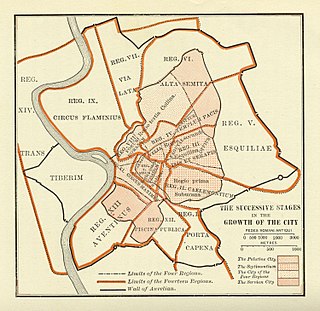 W
WThe Latial culture ranged approximately over ancient Old Latium. The Iron Age Latial culture coincided with the arrival in the region of a people who spoke Old Latin. The culture was likely therefore to identify a phase of the socio-political self-consciousness of the Latin tribe, during the period of the kings of Alba Longa and the foundation of the Roman Kingdom.
 W
WAlba Longa was an ancient Latin city in Central Italy, 12 miles (19 km) southeast of Rome, in the vicinity of Lake Albano in the Alban Hills. Founder and head of the Latin League, it was destroyed by the Roman Kingdom around the middle of the 7th century BC, and its inhabitants were forced to settle in Rome. In legend, Romulus and Remus, founders of Rome, had come from the royal dynasty of Alba Longa, which in Virgil's Aeneid had been the bloodline of Aeneas, a son of Venus.
 W
WThe Alban Hills are the caldera remains of a quiescent volcanic complex in Italy, located 20 km (12 mi) southeast of Rome and about 24 km (15 mi) north of Anzio. The 950 m (3,120 ft) high Monte Cavo forms a highly visible peak the centre of the caldera, but the highest point is Maschio delle Faete approximately 2 km (1.2 mi) to the east of Cavo and 6 m (20 ft) taller. There are subsidiary calderas along the rim of the Alban Hills that contain the lakes Albano and Nemi. The hills are composed of peperino, a variety of tuff that is useful for construction and provides a mineral-rich substrate for nearby vineyards.
 W
WThe Latins, sometimes known as the Latians, were an Italic tribe which included the early inhabitants of the city of Rome. From about 1000 BC, the Latins inhabited the small region known to the Romans as Old Latium, that is, the area between the river Tiber and the promontory of Mount Circeo 100 km (62 mi) southeast of Rome. Following the Roman expansion, the Latins spread into the Latium adiectum, inhabited by Osco-Umbrian peoples.
 W
WOld Latin, also known as Early Latin or Archaic Latin was the Latin language in the period before 75 BC, i.e. before the age of Classical Latin. According to most current theories, it is descended from a common Proto-Italic language; however, others postulate Latino-Faliscan as a separate branch from Osco-Umbrian with further relation to numerous other Italic languages as well as to Celtic—see also the Proto-Italo-Celtic theory.
 W
WOld Latium is a region of the Italian peninsula bounded to the north by the river Tiber, to the east by the central Apennine mountains, to the west by the Mediterranean Sea and to the south by Monte Circeo. It was the territory of the Latins, an Italic tribe which included the early inhabitants of the city of Rome. Later it was also settled by various Italic tribes such as the Rutulians, Volscians, Aequi, and Hernici. The region was referred to as "old" to distinguish it from the expanded region, Latium, that included the region to the south of Old Latium, between Monte Circeo and the river Garigliano – the so-called Latium adiectum. It corresponded to the central part of the modern administrative region of Lazio, Italy, and it covered an area measuring of roughly 50 Roman miles. It was calculated by Mommsen that the region's area was about 1860 square kilometres.
 W
WThe Roman Kingdom, also referred to as the Roman monarchy, or the regal period of ancient Rome, was the earliest period of Roman history, when the city and its territory were ruled by kings.
 W
WThe Monti della Tolfa are a volcanic group in the Anti-Apennines of the northern part of the Lazio region of Central Italy. They are bounded by the Tyrrhenian Sea coast to the west, by the Monti Sabatini to the east, and by the Monti Cimini and the Mignone river to the north. Tolfa and Allumiere are the principal towns.